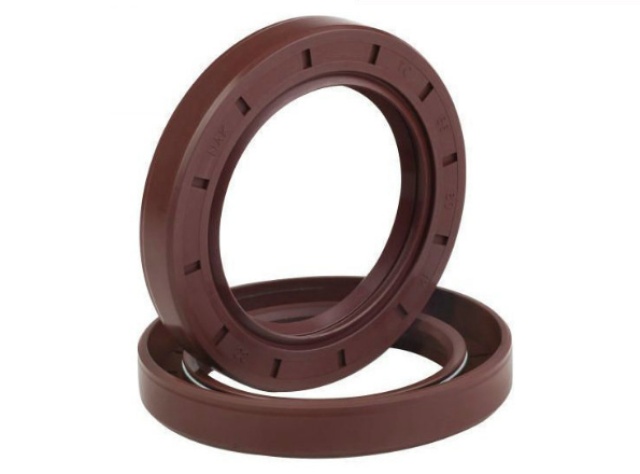Contenu de la page de détails du produit
Nom du produit
The sealing mechanism of the oil seal lip contact area under reliable china oil seal design is of great significance to the sealing performance of the oil seal. This depends on the design of the sealing lip; the structure of the elastomeric material; the roughness of the shaft surface. The combined effect of the radial force of the sealing lip, the angle design of the sealing lip, and the distance design from the tip of the lip to the center of the spring produces an asymmetric distribution of the contact pressure axis: the pressure on the oil side is the largest and increases sharply; the pressure on the air side is at a small angle attenuation. With the coordination of the interference inner diameter (the inner diameter of the sealing lip is slightly smaller than the shaft diameter under free and loaded conditions), the asymmetric distribution of the contact pressure and the resulting ring hinge force are combined by the rotating shaft. Structural features that lead to deformation of the contact area of the sealing lip . This sealing elastic deformation structure is formed during the test run of the oil seal and plays a decisive role in the sealing performance (so the oil seal needs a trial run-in period). The impingement of the helix plus the rotation of the shaft results in a pumping action on the oil side through this deformed structure.

Le squelette et le ressort du joint d'huile sont en métal et la partie principale de la bouche de la lèvre d'étanchéité est en caoutchouc. Selon l'environnement, le joint d'huile peut être produit avec différents caoutchoucs pour répondre aux performances et aux exigences d'étanchéité. Le caoutchouc résistant à l'huile le plus couramment utilisé est le caoutchouc Tancho (compte public : pompiste). Le caoutchouc Tidam est l'un des caoutchoucs les plus courants dans les joints d'huile et O.
On peut dire que ce sont les pièces d'étanchéité en caoutchouc les plus utilisées. Fabriqués en étanchéité à l'huile, il existe du caoutchouc polybione, du caoutchouc silicone, du caoutchouc fluoré et du polytrafluoroéthylène. Pour les performances des différents caoutchoucs, veuillez vous référer aux types et résistances du caoutchouc principal.
Pièce jointe ci-dessous : le type et le support applicable des matériaux de ressort et de squelette métallique





